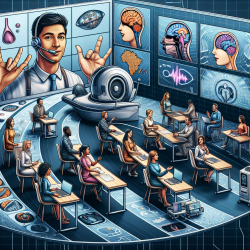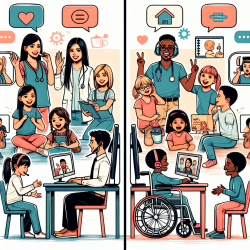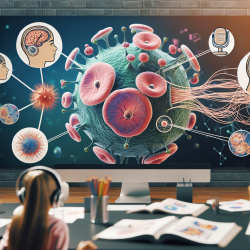Introduction
In the realm of speech-language pathology, technological advancements are continuously shaping the way practitioners deliver therapy. One such advancement is the development of advanced arterial spin labeling (ASL) methods. The recent research article titled "Recent Technical Developments in ASL: A Review of the State of the Art" by Hernandez-Garcia et al. provides a comprehensive overview of the latest innovations in ASL technology. This blog post will delve into the key findings of this research and explore how these developments can be leveraged to enhance online therapy services provided by companies like TinyEYE.
Understanding ASL and Its Importance
Arterial spin labeling (ASL) is a non-invasive MRI technique used to measure cerebral blood flow (CBF). It is particularly valuable in assessing brain function and diagnosing various neurological conditions. ASL can provide critical insights into the brain's perfusion, which is essential for understanding and treating speech and language disorders. The ability to accurately measure CBF can help practitioners tailor therapy to individual needs, leading to better outcomes for children receiving speech therapy.
Key Developments in ASL Technology
The research by Hernandez-Garcia et al. highlights several technical advancements in ASL, including:
- Advanced Readouts and Trajectories: Innovations in readout techniques and trajectory designs have improved the spatial and temporal resolution of ASL images, providing more detailed insights into cerebral perfusion.
- Image Reconstruction and Noise Reduction: New methods for image reconstruction and noise reduction have enhanced the clarity and accuracy of ASL images, making it easier to interpret the data.
- Partial Volume Correction: Techniques for correcting partial volume effects have been developed, allowing for more precise quantification of non-perfusion parameters.
- Deep Learning Applications: The integration of deep learning algorithms has facilitated the development of more sophisticated ASL techniques, enabling the extraction of complex patterns from MRI data.
Implications for Speech Therapy
The advancements in ASL technology have significant implications for speech therapy, particularly in online settings. By incorporating these developments into their practice, speech-language pathologists can:
- Enhance Diagnostic Accuracy: Improved ASL techniques can lead to more accurate diagnoses of speech and language disorders, allowing for more targeted interventions.
- Personalize Therapy Plans: Detailed insights into cerebral perfusion can help practitioners tailor therapy plans to the specific needs of each child, improving the effectiveness of the intervention.
- Monitor Progress: ASL can be used to monitor changes in brain perfusion over time, providing valuable feedback on the effectiveness of therapy and guiding adjustments to treatment plans.
Encouraging Further Research
While the advancements in ASL technology are promising, there is still much to learn. Practitioners are encouraged to stay informed about the latest research and consider participating in studies that explore the application of ASL in speech therapy. By contributing to the body of knowledge, practitioners can help drive further innovations that will benefit children receiving therapy.
To read the original research paper, please follow this link: Recent Technical Developments in ASL: A Review of the State of the Art.










